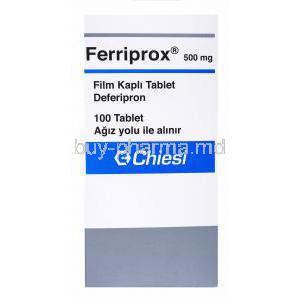Desferal Injection
- Introduction to Desferal Injection
- Composition and Active Ingredients
- Uses of Desferal Injection
- How Desferal Injection Works
- Dosage and Administration Guidelines
- Side Effects of Desferal Injection
- Common Side Effects
- Storage and Handling Precautions
- Interaction with Other Medications
- Warnings and Contraindications
- Administration to Special Populations
- Careful Administration and Important Precautions
- Overdose Management
- Off-Label Uses and Emerging Research
Introduction to Desferal Injection
Overview of Desferal Injection
Desferal Injection, or deferoxamine, is an iron-chelating medication used to treat iron overload disorders. It is crucial for individuals who struggle to naturally eliminate excess iron from their bodies while safeguarding essential organs.
Importance in Medical Treatment
The use of injections has changed the way iron toxicity is treated and greatly enhanced the outlook for individuals with conditions such as thalassemia and hemochromatosis. It has become widely known as an element in handling iron levels in cases where blood transfusions are a regular occurrence.
Regulatory Approval and Clinical Significance
Endorsed by agencies such as the FDA and backed by clinical validation for its safety and effectiveness, Desferal has a solid foundation of research spanning decades that highlights its crucial function in reducing complications caused by excess iron in the body.
Composition and Active Ingredients
Chemical Composition of Desferal
Desferal includes a substance called deferoxamine mesylate, which acts as a water agent in the body to bind excess iron and create stable compounds that can be expelled through urine or feces.

Mechanism of Action Based on Its Active Ingredients
Deferoxamine functions by attaching to ions in the body to neutralize free iron and protect tissues and organs from oxidative harm.
Role of Active Ingredients in Therapeutic Effects
- Helps shield organs such as the liver and heart from the effects of excessive iron levels.
- Effectively lowers the levels of serum ferritin in the bloodstream.
- Reduces the risks associated with iron accumulation over time.
Uses of Desferal Injection
Treatment of Chronic Iron Overload
Use in Managing Thalassemia Major
Application in Hemochromatosis
For individuals with hereditary hemochromatosis, Desferal serves as an adjunct therapy when phlebotomy is insufficient or contraindicated. It aids in managing systemic iron accumulation.
Off-Label Uses in Aluminum Toxicity
Desferal is sometimes used in a way to address aluminum toxicity in individuals with kidney disease who are receiving dialysis treatments.

How Desferal Injection Works
Mechanism of Iron Chelation
Desferal works by combining with iron ions to make them inactive and prepared for removal from the body system, which in turn helps avoid the buildup of iron in tissues.
Role in Preventing Organ Damage
By binding to iron ions in the body's tissues and cells, Desferal helps decrease damage and lipid oxidation, protecting vital organs such as the heart, liver, and pancreas from potential harm that could be permanent.
Biological Processes Targeted by the Drug
The medication is designed to focus on non-transferrin-bound iron (NTBI )and labile plasma iron ( LPI) as they are primarily responsible for the harmful effects of iron overload.
Dosage and Administration Guidelines
Standard Dosage for Adults and Children
The correct amount of medicine depends both on the amount of iron in the body and on how much you weigh. An adult usually takes between 20 and 40 mg per kilogram each day, while children take adjusted doses based on their size.
Routes of Administration
- Subcutaneous: Commonly preferred for continuous infusion.
- Intramuscular: Used for specific cases requiring quick intervention.
- Intravenous: Reserved for acute iron toxicity or emergencies.
Factors Influencing Dosage Adjustments
Adjusting the dosage is greatly influenced by factors such as kidney function status and serum ferritin levels, as well as how the patient can tolerate it.
Step-by-Step Guide for Safe Administration
- Prepare the medication by mixing it with water meant for injection purposes.
- Make sure the answer is easy to understand and doesn't contain any particles.
- Please ensure to apply the medication using the recommended method in an environment.
Side Effects of Desferal Injection
Overview of Potential Adverse Reactions
While effective, desferal may cause adverse reactions ranging from mild discomfort to severe complications. Vigilant monitoring is essential to mitigate risks.
Rare but Severe Side Effects
- Anaphylaxis or severe allergic reactions.
- Acute respiratory distress.
- Neurotoxicity, including hearing loss or vision impairment.
Signs to Discontinue Use
If you experience issues such as trouble breathing, swelling, or feeling dizzy for a period of time, those symptoms warrant prompt medical care and stopping any ongoing activities.

Common Side Effects
List of Frequently Reported Side Effects
- Localized pain or swelling at the injection site.
- Mild gastrointestinal disturbances such as nausea or diarrhea.
Tips to Manage Mild Adverse Effects
- Try using ice packs to ease any discomfort at the injection site.
- Remember to drink plenty of water to help prevent feeling dizzy.
- Make sure to seek advice from a professional if your symptoms continue.

Storage and Handling Precautions
Recommended Storage Conditions
Store Desferal in a dry place at temperatures under 25°C (77°F). Keep the medication away from sunlight and high humidity, as these can affect its effectiveness. Make sure to store it in a place that's inaccessible to children and unauthorized persons.
Shelf-Life and Stability Information
The shelf-life of Desferal is typically indicated on its packaging. Once reconstituted, the solution must be used immediately or stored in a refrigerator for no more than 24 hours. Discard any unused solution after this period to avoid reduced potency or contamination.
Safe Disposal Practices
- Do not dispose of unused or expired medication in household trash or wastewater.
- Follow local regulations for medical waste disposal, often facilitated by pharmacies or designated drop-off sites.
- Use sealed, labeled containers to prevent accidental exposure during disposal.
Interaction with Other Medications
Potential Drug Interactions
Desferal may interact with other medications, altering their effectiveness or causing adverse reactions. Notable interactions include:
- Vitamin C supplementation can enhance the chelating effects but may increase toxicity risks.
- Certain antibiotics, like tetracyclines, may have reduced efficacy when used concurrently.
- Medications affecting kidney function may amplify the risk of nephrotoxicity.
Foods and Supplements to Avoid
It's important for patients to avoid taking large amounts of ascorbic acid without consulting a healthcare professional. Also, it's wise to be careful when consuming iron-rich foods and supplements, as they may interfere with the beneficial impacts of Desferal.
Impact on Other Medical Treatments
Desferals' effects could involve procedures like dialysis or treatments for anemia. It's important to work with healthcare professionals to make sure these treatments align well with other ongoing treatments.
Warnings and Contraindications
Situations Where Desferal Should Not Be Used
Patients with kidney issues or those who are highly sensitive to deferoxamine should not take Desferal medication as it can be harmful to them without medical monitoring, especially in cases of acute iron poisoning.
Specific Health Conditions to Disclose Before Use
Patients should make sure to let their doctor know about any existing health issues, like kidney problems or a serious heart condition, as any past instances of seizures, since these can greatly impact how safe and effective Desferal is for them.
Administration to Special Populations
Administration to Elderly Patients
Elderly individuals may require changes in medication dosages because their kidney function decreases with age, which may significantly affect drug clearance rates. It is important to check kidney function and iron levels to prevent the risk of drug buildup in the body.
Administration to Pregnant Women and Nursing Mothers
Pregnancy Risks Warning: It is recommended to use Desferal during pregnancy only if the advantages outweigh the risks involved. Studies on animals have shown harm to fetuses; hence, caution is necessary. Effects on Breastfeeding Babies; Though there is information on its presence in milk mothers who breastfeed should seek advice, from their healthcare provider to assess the safety of breastfeeding while using Desferal.
Administration to Children
Children who have thalassemia may need Desferal for treatment purposes; it is important to check their growth and hearing to ensure the drug's long-term safety and effectiveness are maintained.
Careful Administration and Important Precautions
Monitoring Iron Levels During Treatment
Routine serum ferritin and transferrin saturation tests are essential to ensure therapeutic efficacy while preventing iron deficiency.
Regular Health Checkups and Tests Required
- Frequent kidney function tests to detect early signs of nephrotoxicity.
- Hearing and vision tests to monitor for neurotoxicity.
- Complete blood counts to evaluate overall health status.

Preventing Complications with Correct Usage
Overdose Management
Symptoms of Overdose
Overdose symptoms may include severe dizziness, respiratory distress, or seizures. In severe cases, it can lead to acute kidney injury or neurotoxicity.
Emergency Protocols and Treatments
- Immediate discontinuation of the drug and supportive care.
- Administration of intravenous fluids to enhance excretion.
- Monitoring vital signs and addressing symptoms promptly.
Long-Term Complications of Overdose
Chronic exposure to excessive doses can lead to irreversible organ damage, emphasizing the importance of prompt intervention in overdose scenarios.
Off-Label Uses and Emerging Research
Current Off-Label Applications of Desferal
Beyond its approved uses, Desferal is sometimes employed in experimental settings, such as treating neurodegenerative conditions linked to iron dysregulation.
Ongoing Studies Exploring New Uses
Researchers are currently exploring the use of the drug in treating conditions such as Alzheimer's disease, where the buildup of iron may have a role in the disease process.
Potential Future Therapeutic Areas
The future of Desferal may extend to novel applications, including its use as an adjunct therapy in managing oxidative stress-related diseases, subject to further validation through clinical trials.








